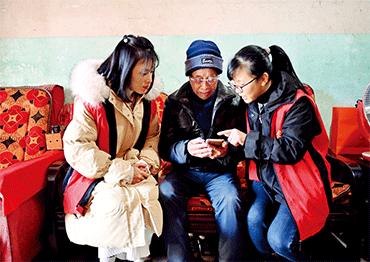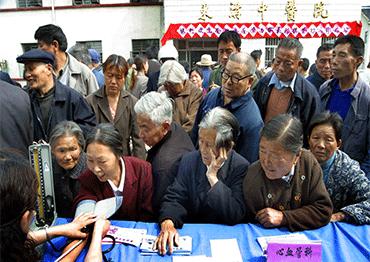While the NRCMS has alleviated the medical burden once shouldered by rural populations, residents in many rural places told NewsChina that the continued annual cost increases is the main deterrent to paying their premiums.
“I always paid the NRCMS every year since it started until last year,” said Huang Xiaoyun, who added that the higher 380-yuan premium was a burden for farmers like him. “Our only income is from farming. In my family, the total cost for four elderly people, me, my wife and our three children can be as much as 3,000 yuan (US$417), which is a big expense for us,” Huang said. “Ten years ago, our [combined] monthly income was about 4,000-5,000 yuan (US$556-695), but now it’s about 6,000-7,000 yuan (US$834-973) a month. Our income hasn’t risen much, but the cost of the NRCMS keeps going up.”
Zheng Fengtian, director of the Rural Development Institute at the Renmin University of China in Beijing, told the reporter that a significant number of farmers complained about the high price of NRCMS to him during his field research. “This has become a widespread phenomenon,” he said.
In Zhu Minglai’s opinion, the 2010s saw widespread and significant income increases for both the rural collective economy and migrant workers, so they could afford the increased cost of health insurance. But lately, many rural economies are suffering, and there is rising rural and urban unemployment. It is a challenge for both individuals and local government administrations to pay for health insurance.
According to Xie Zhangshu, the financing methods of medical insurance for urban and rural residents is dynamically adjusted every year. With economic and social development, the wide application of new medicine and new technology has resulted in greater public demand for medical insurance, including the demand for higher compensation and reimbursement of medical expenses, and the expanding scope of medical insurance.
The government funds about 64 percent of the NRCMS, and its portion rises annually. In 2006, the central government provided over 20 yuan (US$3) per capita subsidies for NRCMS, with a 10-yuan (US$1.5) contribution from individual households. In 2010, the central government provided over 120 yuan (US$17) per capita subsidy to rural residents matched by 60 yuan (US$8) from rural residents. By 2023, the subsidy was 640 yuan (US$89), with 380 yuan (US$53) paid by residents.
At the same time, the list of diseases covered in the scheme has expanded, with more treatments, diagnostics and medications covered, as well as a higher rate of reimbursement for out of pocket expenses.
According to the NHSA, the annual growth rate of total national medical expenses is around 8 percent. In 2021, compared with 2011, the average national cost of hospitalization increased from 6,632 yuan to 11,003 yuan (US$922-1,529), an increase of about 66 percent in a decade.
And funds are tight, with an overall deficit from insurance schemes. From January to November 2023, combined funds from all sources for rural and urban medical insurance was 886.32 billion yuan (US$123.17b), but outgoings were 920.41 billion yuan (US$127.91b), a deficit of 34.09 billion yuan (US$4.74b) in the first 11 months of 2023.
Liu Yiqiang believes rural dissatisfaction with the rise in medical insurance premiums is because they are unaware why overall healthcare costs are rising and what more benefits have been brought by the improved coverage. “If policymakers can’t effectively communicate with the public why they need to increase premiums in an accessible and accountable way, it will be hard to operate the system properly,” Liu said.

 Old Version
Old Version


